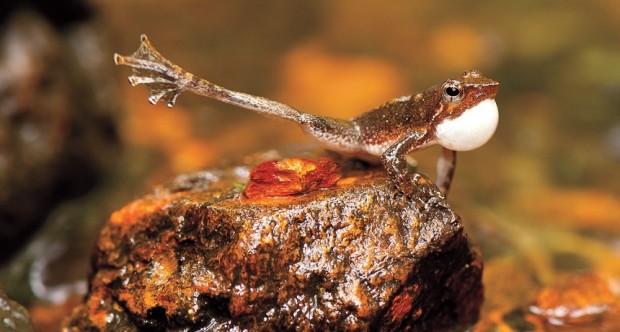Music of the Night
Written by Tyler Parker
Since it’s almost Valentine’s Day we here at the Zoo would be remiss if we didn’t talk about how amphibians find that special someone.
Amphibians are probably the most commonly heard vertebrate on the planet and this is due to the wonderful chorus that frogs and toads provide every year in the spring and summer, at least in North America.

Each year large groups of males congregate at perennial or vernal pools, ponds, or streams and sing for their mate. The larger the chorus of bachelor frog the more attractive it is for the ladies. Yet, even if multiple different species of frogs or toads are calling at one pond, each species of frog and toad have their own unique and identifiable call. This is how many researchers calculate populations of amphibians by listening to each individual species chorus and count the number of males calling.
This bombastic strategy isn’t the only way amphibians find their mates. Some frogs and toads are unable to call loud enough due to other noise in their environments such as fast moving streams or rivers. These frogs and toads employ the strategy of semaphoring, which is basically flagging or waving of either their front or back legs to stake claim to a territory or attract a mate.
Salamanders and caecilians utilize chemicals called pheromones to attract a potential mate. Newts attract mates via a skin color change or a physical change in body shape often, with males developing very prominent crest or dorsal appendages.
In all, amphibians utilize a wide variety of ways to attract a special someone, yet all are unique and amazing in their own right.
